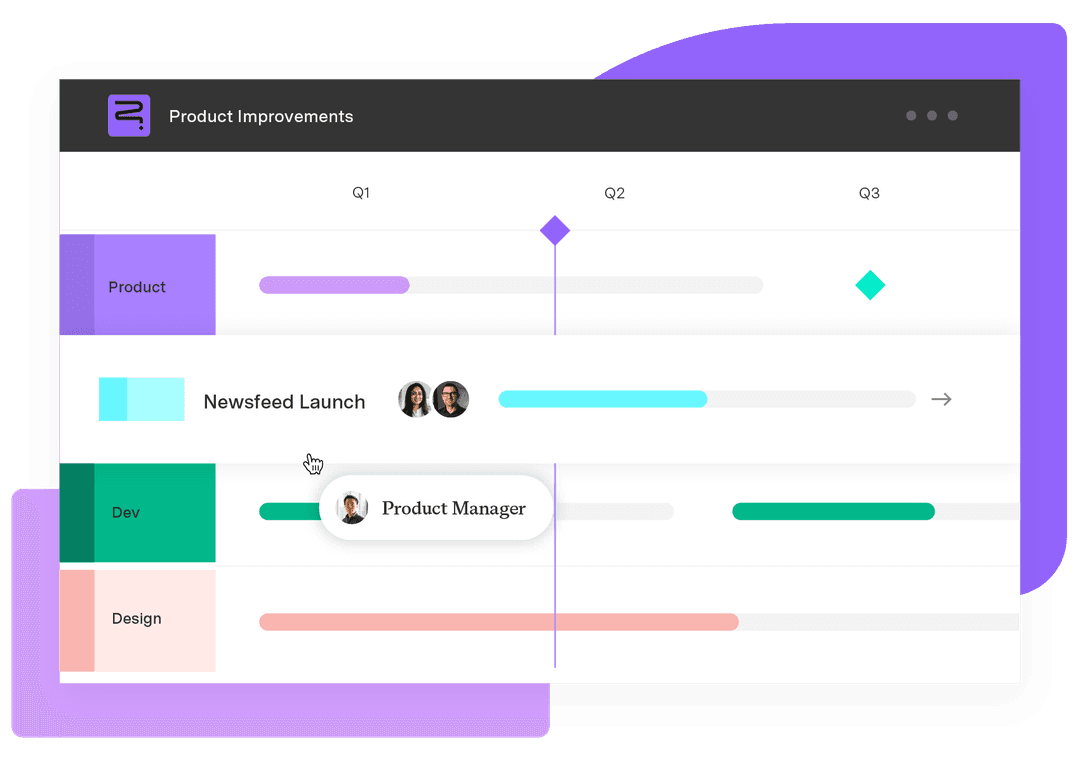How to use decision tree analysis in project management
Tempo Team
Project management is all about making decisions. Some are small; others can change the course of an organization. Often, there’s no obvious correct answer.
Fortunately, decision-making tools exist to help leaders identify the optimal course of action. Decision tree analysis maps out choices visually, highlighting risks and allowing project teams to weigh options before committing. This guide will explain how to create and use a decision tree. You’ll learn how this tool clarifies the path forward and enables better decisions.
What is a decision tree?
A decision tree breaks a problem into manageable parts by visually mapping out decisions and their outcomes. It helps teams think through complex choices by illustrating each option, its potential results, and the likelihood of those results. The outcomes listed on this branching diagram are driven by data and probabilities.
A decision tree looks similar to a flowchart. New choices appear at each node (or fork), enabling decision-makers to compare paths and spot risks and opportunities. Each branch follows the consequences of a decision point or event.
A decision tree diagram consists of three primary types of nodes: decision nodes, chance nodes, and terminal nodes. Decision nodes, represented by squares, signify when the decision-maker has control and chooses between alternatives. Chance nodes, shown as circles, represent uncertain events where probability will affect the outcome. Terminal nodes, depicted with triangles, indicate the final results of the decision process, such as costs and benefits.
Decision tree analysis in project management is used by leaders to identify the best path and explain their reasoning to others. It also assists with risk management by showing where things might go wrong and what each scenario could cost. Analysts use decision trees in finance to forecast possible revenue paths and plan for market conditions. Seeing potential paths side by side makes it easier to spot the smartest move.
How to make a decision tree
Decision trees support project governance by providing an auditable record of choices. They are also helpful in agile environments, where teams must make informed decisions quickly and iterate based on results. Trees support sprint planning and clarify the impact of backlog items.
Follow these steps to build and analyze a decision tree:
1. Define the decision
Start by outlining the decision you need to make. Be clear and narrow in scope – for example: “Should we launch Feature A this quarter or wait until next?” Vague questions lead to messy trees.
Avoid centering your decision on a broad goal, like “Make customers happier.” Instead, frame it as a choice between two or more actions to give your tree a solid starting point. If needed, break down large decisions into smaller, sequential trees.
2. Identify possible choices
List the actions you could take. These become the first set of branches on your tree. Verify that these options are realistic, and consult team leads or subject matter experts to avoid missing viable paths.
Don’t stop at the obvious choices. Push for creative alternatives, even if they seem less likely. You can eliminate weak options later during analysis. Also, make sure each option is mutually exclusive. If options overlap or depend on one another, your tree will get confusing fast.
3. Determine potential outcomes
For each option, map out the possible consequences. These could be success or failure, best-case or worst-case scenarios, or any significant result of the action taken. Keep branching until you’ve covered all likely developments, with each node representing a specific result.
Focus on outcomes that directly affect business goals, such as revenue or delivery time. Avoid vague outcomes like “project delayed” unless tied to measurable impacts. If your outcome depends on external factors (like market response), note those dependencies so you can account for them later.
4. Assign probabilities
Use past performance data to estimate the chance of each outcome; a rough percentage is usually enough. These estimates should reflect how likely each outcome is, not with perfect precision, but with enough clarity to support a well-informed decision.
If you don’t have data, be transparent about the source of your estimates. A guess based on experience is helpful if you label it clearly.
5. Estimate costs or benefits
Attach a positive or negative value to each outcome. This could be financial (e.g., revenue, savings, losses) or reflect the use of key resources. Stick to the same unit of measure throughout the tree to compare results fairly.
Be precise about what you’re measuring. If it’s revenue, include potential overhead or operational costs that would eat into profit. If you’re measuring team effort, define that clearly. Don’t overlook intangible costs, like technical debt or opportunity cost, as these can shift the value of a decision.
6. Analyze the tree
Multiply each outcome’s probability by its estimated value to calculate its expected value at each leaf node (the final points on each branch). Add up the expected values for each path. The values highlight which option offers the best return or the least risk, so you can act on what matters most for your team.
Use expected value as a starting point. High-value options may come with high risk, so consider your team’s risk tolerance. Also, look for patterns across branches. If most of a choice’s potential outcomes are projected to stretch your resources thin, it might be impractical, even if the expected value looks good.
Decision tree examples
Imagine a product team is weighing three project options: launching a brand-new analytics dashboard, improving the existing reporting tool, or developing an AI assistant to streamline internal workflows. Each option has a different cost, set of risks, and potential reward.
Building the new analytics dashboard would cost $60,000. Based on research, the team estimates a 45% chance of high adoption, which could generate $220,000 in revenue, and a 50% chance of moderate adoption, bringing in around $160,000.
Upgrading the current reporting tool is the least expensive option at $30,000. This project carries a 65% chance of high adoption, which could lead to $120,000 in revenue. It has a 30% chance of more moderate success, leading to around $95,000 in revenue.
The AI assistant is the most ambitious and costly option, requiring an investment of $80,000. However, it also has strong potential: a 50% chance of high adoption, resulting in $280,000 in revenue, and a 45% chance of moderate adoption, producing an income of $210,000.
Once the team builds a decision tree and calculates the expected values for each path, the analysis points to the AI assistant as the most valuable long-term investment. Although it demands more up front, the payoff outweighs the risk when viewed through the full tree.
Enhancing strategic decision-making with Tempo
Tempo allows teams to make more strategic decisions within Jira’s project management software. Instead of juggling spreadsheets or switching between tools, teams can plan visually and compare scenarios in one place.
Strategic Roadmaps helps teams lay out multiple paths and examine how each choice could impact delivery timelines and business goals. Roadmaps enable leaders to spot risks early, align on priorities, and adjust plans when needed.
Custom Charts for Jira helps teams visualize data, track progress, and share updates. These tools support better decision-making by connecting everyday work with big-picture thinking.
Book a demo today and see how Tempo can revolutionize your decision-making process.














































